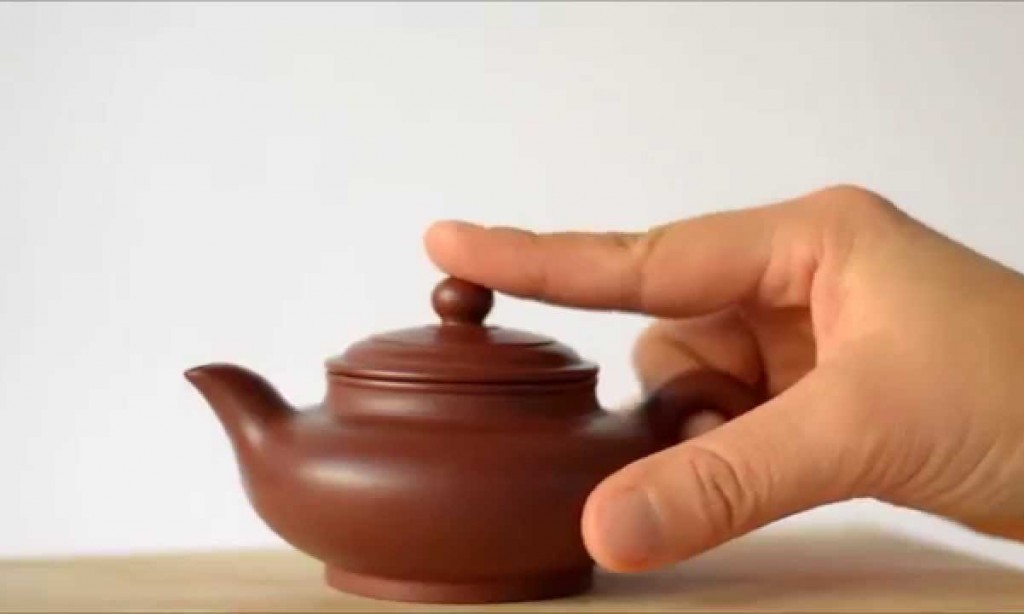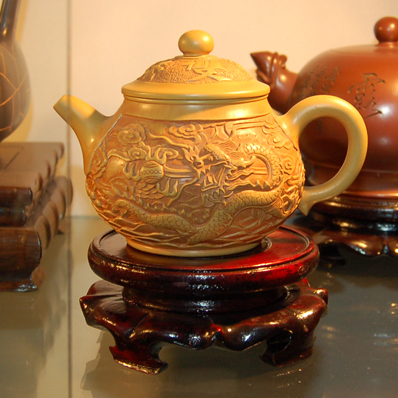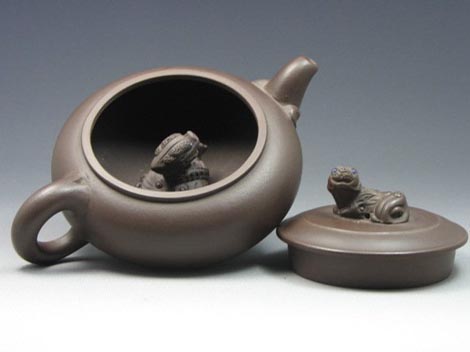I love purple clay for it has no color of glaze, just like that you can see one’s mind directly. One doesn’t rely on the appearance to show his nobility, and only that which is true in nature is most valuable and pleasing. – Gao Zhuang
The making of zisha tea ware begins within the mountains of Yixing where 350 million year old mineral deposits rest. These minerals have formed a material the Chinese call “purple sand clay” or “zisha”. Once the unprocessed zisha, which resembles a piece of rock with a flaky outer surface, is mined and extracted the clay must be selected and worked by hand. Separated by color, the pieces are laid out and allowed to be weathered naturally by the sun, the wind, and the rain until the clay reaches approximately the size of a soybean. Higher quality clay is weathered for several years before being processed, but due to increased popularity and the faster pace of modern times this action is often sped up by machines that crush the clay into finer pieces. Once weathered, the clay is ground into a fine powder and magnets are held over the material in order to extract excess iron content. This will help create a finer, smoother end product. Finally, it is sifted many times and tempered by water creating the mature clay that will eventually be molded into various pieces of pottery.
There are three kinds of zisha clay: purple clay, red clay, and green clay. Each material can be made into pottery on its own or mixed with the other two kinds of clay. In 1916, potters began to add oxidized metal to the fine clay powder in order to achieve a variety of colors like, dark purple, pear brown, copper, or dark green. However, the most cherished pots are still the natural untouched zisha clay. Purple clay is the most common type of Yi Xing tea ware and usually resembled a dark brown once fired. Green clay is only found in small quantities and therefore it is rare to see an entire pot made of this material. It is usually used for accents and decoration and resembles the color of a dark egg shell once fired. Red, or Zhuni pots, are not as common as the purple clay, but can still be found in larger amounts then the green clay. This material is located deep within the mountain layers towards the bottom of the mineral deposits making it more difficult to find and therefore more sought after.
Once ready to construct a piece of pottery the clay is re-hydrated and pounded to remove any excess air bubbles. High quality clay is pounded for weeks achieving a very even and consistent surface. The worked zisha clay possesses many unique qualities. It has a near perfect plasticity making it possible to create many different sizes and shapes coupled with sharp, distinct designs. Its cohesive force is also strong, but not sticky when worked with either hands or tools. This is an important factor since these pots are rolled and pressed, not thrown like some other forms of ceramic ware. Also, the shrinking force is very small only reducing in size about ten percent from molding to firing. This allows for precise fitting and closely matched lids helping the teapot sustain the correct water temperature for a complete tea infusion. Lastly, there exists an appropriate quantity of ferric oxide and many other micro-metallic elements making the color of a zisha teapot plain and graceful. Since the simplistic beauty is much sought after, it is rare that a potter will enhance its natural form with glazes.
Photo credits & source: sevencups.com







